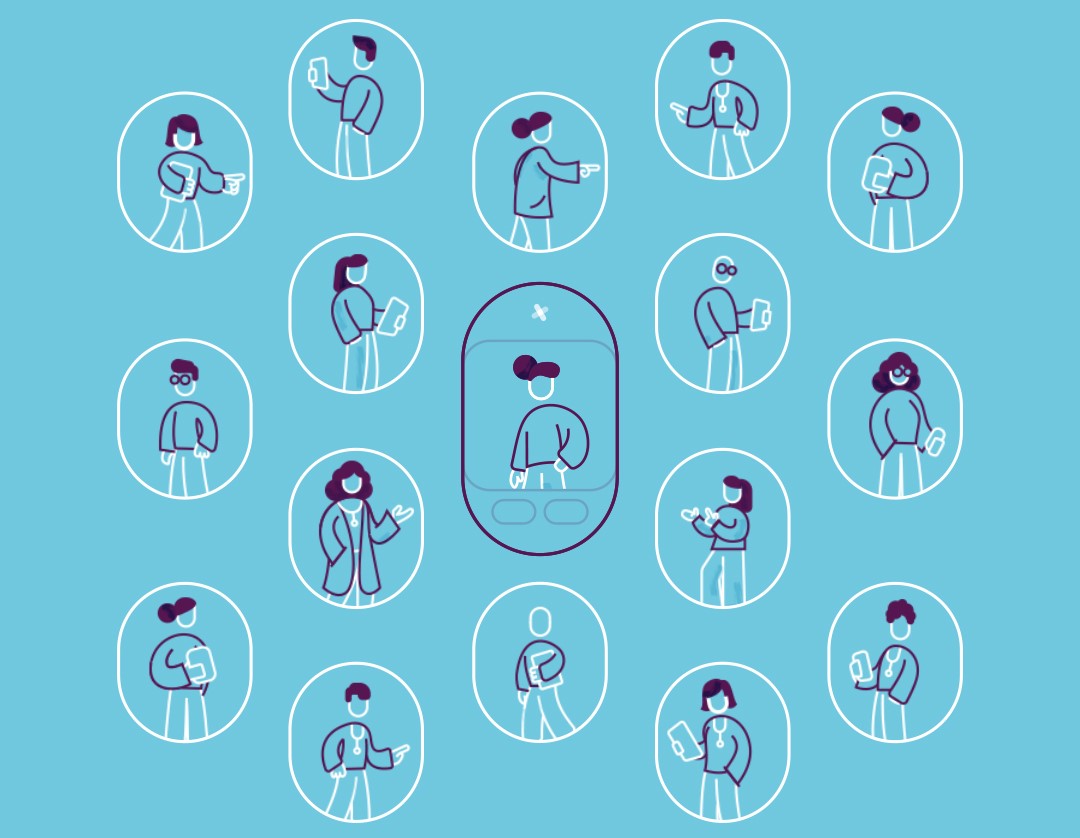Contact the following healthcare facilities directly:
MS Center Melsbroek
AZ Turnhout
Sint-Trudo Sint-Truiden
AZ Glorieux Ronse
AZ Jan Portaels Vilvoorde
Rehabilitation Hospital Inkendaal
door Nexuzhealth op 23.1.2024

“Setting our sights on supporting healthy people in a healthy society by building platforms in which we can work together boundlessly.” CEO Gertie Delande's mission is clear. And so, nexuzhealth is gradually evolving towards centralised software in which all parties involved can map out and follow their patients’ care pathways together. Step by step.
A major milestone was the integration of the first GP into the revamped platform. “That takes us all the way back to the spring of 2022,” recalls Director of Primary Care, Lore De Raeve. “While I was guiding the doctor through the system during his consultations, a team of about 30 colleagues monitored the whole thing from the office. We then made adjustments and continued to roll out the application in other GP practices. Today, this process runs incredibly smoothly.”
There is also a team working in parallel on nexuzhealth pro for home care nurses. “When developing this, we worked together closely with CT Paramedics. Again, we were supported by the back office,” says Lore. “That too went smoothly. Especially since we reused functions and components from the existing applications. After further optimisation, we will soon be ready to further scale up the software for the home care nurses at CT Paramedics.
A similar track is also ongoing for White and Yellow Cross. Their employees work with tablets, which requires some customisation. And so, we continue to fine-tune. Today, in addition to the e-Health services, opportunities for even better collaboration just keep on coming. In a variety of domains. Consider medications. Here, we go beyond merely sharing prescriptions. Home care nurses can now also input their own suggestions for certain medications in the system. It is then up to the GP to validate these suggestions or not. All with a few simple clicks and, of course, always within the same software platform.”
Meanwhile, developments at the hospital level also continue to move forward. “We are moving from CWS to nexuzhealth pro in phases,” explains Director of Product Management, Bob Neven. “We will launch the full-feature EHR by 2029. This involves much more than just functionalities, since we also need to link to governmental agencies and other entities. Today, more than 50% of Flemish hospitals use our software. By 2026, that figure should be above 65%.”
What else? Well, the patients themselves. “Of course, we haven’t forgotten them,” emphasises Bob. “In fact, in everything we do, the patient is our starting point. The more than 1.3 million mynexuzhealth users will soon be presented with a brand-new version of the app. This new version will not only make the data from CWS accessible but also the data from the GPs and home care nurses. In combination, of course, with the e-Health data and that of third-party providers, such as telemonitoring applications.
This allows patients to quickly and easily find all the info about their care pathway. Across all lines and down to the smallest detail. And, if desired, in the form of a timeline showing what has happened in chronological order. From the initial consultation with the GP to an appointment with a specialist and from hospitalization to home nursing care.”
“Throughout all these phases, the healthcare providers work in nexuzhealth pro,” Lore adds. “We are working on a single, overarching, digital patient record with a uniform look-and-feel in which each party has continuous access to the latest info and can record and share their findings and suggestions with colleagues. This way, no data is lost, and the patient is assured of the best possible care. Afterwards, too. By having the patients complete a questionnaire about their current condition, anyone who plays an active role in the care pathway can see how the patient is doing any number of weeks or months later.
The application also results in an enormous boost in efficiency. For example, when a GP uses the system to schedule an appointment for a patient at the hospital, the patient receives a notification upon entering the hospital entrance hall which allows him or her to register digitally. When the patient reaches the waiting room, they simply register their arrival at a digital kiosk using a QR code. The patient is greeted and registered without the need for any paper or a reception desk.
Is hospitalization required? If so, all reports will be automatically delivered to both the patient and the GP. And if home nursing care is required after hospitalisation, then the attending home care nurse will have access to which parameters and what type of wound care, hygiene and/or medication is needed, all at a glance. In short, the digital flow continues through every aspect of the care pathway and feels very natural for both the caregiver and the patient.”
MS Center Melsbroek
AZ Turnhout
Sint-Trudo Sint-Truiden
AZ Glorieux Ronse
AZ Jan Portaels Vilvoorde
Rehabilitation Hospital Inkendaal